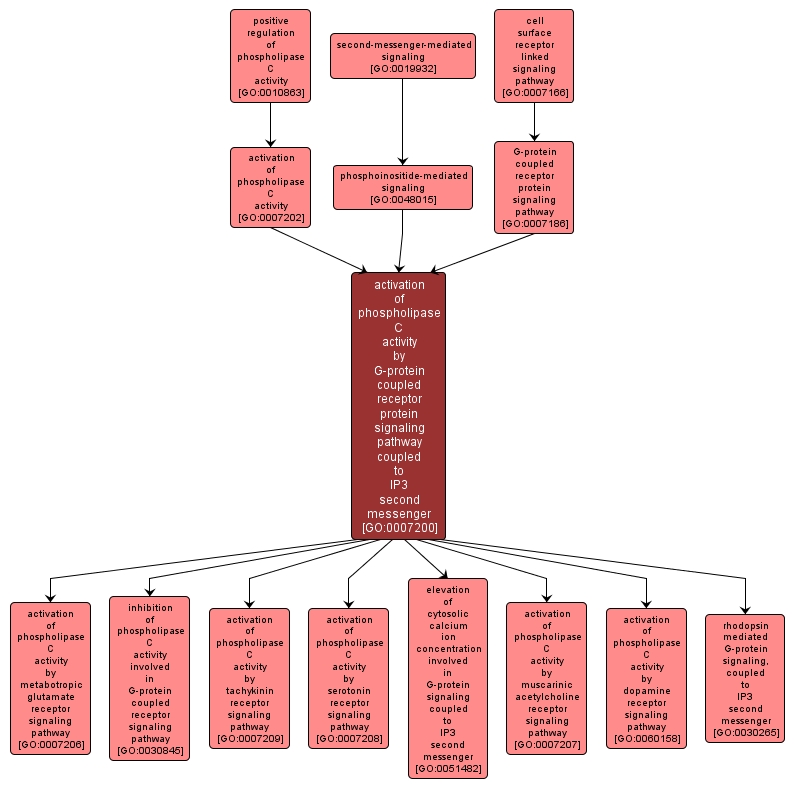GO TERM SUMMARY
|
| Name: |
activation of phospholipase C activity by G-protein coupled receptor protein signaling pathway coupled to IP3 second messenger |
| Acc: |
GO:0007200 |
| Aspect: |
Biological Process |
| Desc: |
The series of molecular signals generated as a consequence of a G-protein coupled receptor binding to its physiological ligand, followed by the activation of phospholipase C and the subsequent release of inositol trisphosphate. |
Synonyms:
- G-protein signalling, coupled to IP3 second messenger (phospholipase C activating)
- G-protein signaling, coupled to IP3 second messenger (phospholipase C activating)
- G protein signaling, coupled to IP3 second messenger (phospholipase C activating)
- phospholipase C-activating dopamine receptor signaling pathway
- G protein signalling, coupled to IP3 second messenger (phospholipase C activating)
|
|

|
INTERACTIVE GO GRAPH
|














